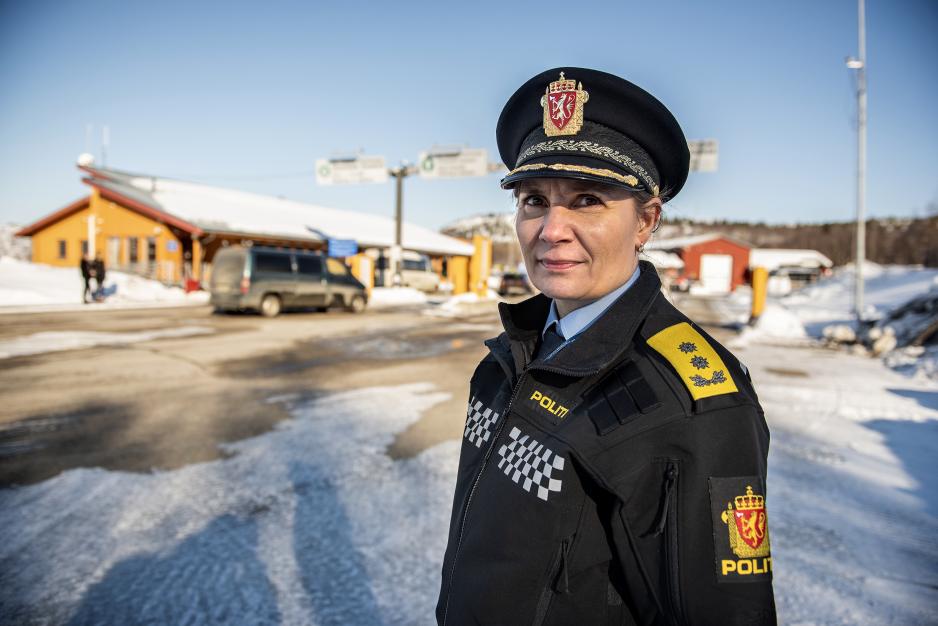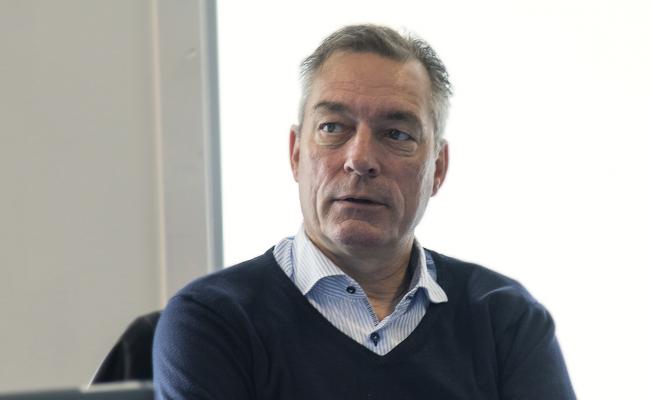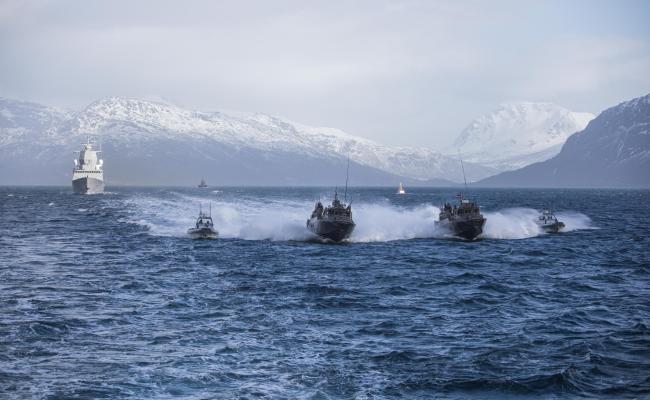Ukraine War Finnmark Police Chief: “Without A Strong, Civilian Footprint There Is Nothing for Us to Protect”

“Such a sparsely populated and large district requires a shared situational understanding in order to manage crises such as the pandemic and the war in Ukraine”, says Finnmark Police Chief Ellen Katrine Hætta. (Photo: Jonas Karlsbakk, the Barents Secretariat)
Too poor civilian preparedness in Finnmark may lead to a weakening of the capacity to manage a crisis. “We must avoid that”, says Finnmark Police Chief Ellen Katrine Hætta.
“Without a strong, civilian footprint there is nothing for us to protect”, says Police Chief Ellen Katrine Hætta, who manages 17 police stations and services in Finnmark Police District, the only Norwegian police district to share a border with Russia.
Referring to civilian footprint, Hætta means education institutions, health services and hospitals, police and an active civil society sector. Simply a viable society. That is not the current situation in Finnmark, and Hætta is clear that extra funding from the government not only should be used to strengthen the Armed Forces, but also the civilian preparedness in the High North, something that is necessary in order to face the current as well as future crises.
“Such a sparsely populated and large district requires a shared situational understanding in order to manage crises such as the pandemic and the war in Ukraine”, Hætta says and adds that the understanding of what is required in Northern Norway is better now than during the refugee crisis in 2015.
Immediate measures
Following the Russian invasion of Ukraine, the Norwegian government has proposed strengthening the defense sector with NOK 3 billion in 2022 and points to immediate measures to increase the Armed Forces’ presence in the North.
The allocations are mainly to be spent on upgrading activities for sea forces, land forces, and intelligence in the North, as well as the Armed Forces’ capacity to reception and support of allied forces, primarily in the North.
However, for Norway’s second-largest and northernmost police district, one that is at the same time the smallest when it comes to number of citizens, increased military activity will not suffice.
Norway cannot be equally distributed in a spreadsheet and we do not have the same resources as those in the south
Sharp criticism
In the long-term plan for the Armed Forces, launched by the then-Solberg government in the fall of 2020, attention is drawn to the fact that civilian support of military forces is crucial for the country’s defense capacity:
“In a serious crisis situation as well as in armed conflict, the Defense’s need for goods, services, personnel and access to infrastructure will exceed what that which is at the disposal of the Armed Forces. The Total Defense concept implies that this added need must be met by civil society where a series of critical goods and services are partially based in import and cross-border flow of work force. Norwegian and allied forces depend on civilian support in order to conduct operations of some extent and longer duration in Norway.”
However, in the “Defense Analysis 2022”, made for the MoD by the Norwegian Defense Research Establishment, sharp criticism is expressed towards the Norwegian civilian preparedness:
“We have identified challenges related to civilian supply services and staffing of the Armed Forces. The conclusion is that there is not, nor will there be, a balance between tasks and structure with the current plans”, the report says. It was completed prior to the Russian invasion of Ukraine.
Yet none of the immediate measures in the parliament whitepaper contains increased support for civilian preparedness in the Norwegian High North.
Finnmark Police Chief Ellen Katrine Hætta spoke about challenges to preparedness in Finnmark during Øvelse Nord 2022 in Bodø, Norway. (Photo: Trine Jonassen)
Not equally distributed
Resources are not equally distributed in the country today.
“Norway cannot be equally distributed across a spreadsheet and we do not have the same resources as they do in the south. Thus, our ability to mange crises will fluctuate over time”, Hætta says. She has allied up with the Finnish border control as one of the preparedness measures for facing the challenges that lie in being close to a neighboring country that is at war.
“In particular because Finland has a border against Russia that is far longer than ours. They provide us with a solid situational understanding and can give us information about what happens faster, and this cooperation goes both ways”, Hætta says to High North News.
The new normal
Crisis management is the new normal, even though Hætta argues that this should not be the case. Since 2017, for instance, blocking or locking of GPS signals – so-called jamming – has become a regular feat in eastern parts of Finnmark.
“As late as last Sunday, a pilot reported to us that there was ongoing jamming. There is nothing we can do about it, and it is hard to have a new normal that we should not have had”, the police chief says.
The disturbances have consequences for the population too. Amongst others, it makes search and rescue a lot harder.
“Perhaps we cannot located the person who has triggered their attack alarm. There have also been incidents with ambulance planes that were unable to land, and entrepreneurs who do now know where to dig”, the police chief explains.
Local knowledge
Would you say that the digital infrastructure is too poor?
“We should at least create systems for situational understanding that is not dependent on technology, and that is a part of the non-digital planning that is already in place today”, the police chief says.
We need local knowledge when the digital map no longer works
When facing cyber attacks and disturbances in the digital infrastructure, there are no other measures than for the public offices in Finnmark to have local knowledge when the digital map no longer works.
What is the potentially gravest consequence of lacking civilian preparedness in Finnmark?
“It leads to our capacity to manage a crisis is weakened. We should avoid that”, Hætta says.
Mapping
In addition to being a police chief, Hætta is part of a committee appointed by the Total Defense Commission in January this year, a committee’s whose task it is to assess strengths and weaknesses of the current preparedness systems.
How does the committee work to strengthen civilian preparedness in the North?
“We have started the job and is initially primarily working to map resources and management systems. After that, we will respond to the mandate from the government. So it will be very exciting”, Ellen Katrine Hætta says in closing.
The Commission is to submit its work to the government by June 2023.
Also read
This article was originally published in Norwegian and has been translated by HNN's Elisabeth Bergquist.



